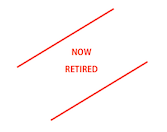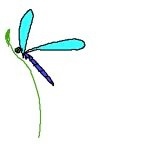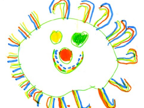Jolyon D. Wardle DO. N.D., M.R.N. Now Retired
Valerie Wardle Bsc(Hons.) Ost.Med. Now Retired
Jolyon D. Wardle DO. N.D., M.R.N. Now Retired
Valerie Wardle Bsc(Hons.) Ost.Med. Now Retired



1987 to 2019
CLINIC TIMES Now Retired
GRANGE Now Retired MON, TUES, WED & FRI AM
other times by arrangement
Valerie Wardle Now Retired Bsc(Hons.) Ost. Med.


Jolyon D. Wardle Now Retired DO. N.D., M.R.N.
All Practises now Closed as we are Retired but did have :
electric couches
a choice of days in all practices
as well as a choice of practitioners
support for all major insurance
schemes including BUPA,WP, PPP, Medicash & HSA
medico-legal reports and certificates
can now be prepared much swifter
Osteopathic and Naturopathic treatments are at least half an hour and more normally 40 minutes
FEES
Initial consultation and treatment ...£42
All subsequent treatments are £42
State Registered Osteopaths Now Retired
& Naturopaths Now Retired
Both of us are Now Retired but were fairly eclectic in our use of techniques, however...
If you require a total Cranial treatment or would prefer a non cranial approach, please feel free to ask. Don’t be afraid to ask to be seen by either of us - our different approaches will suit some more than others!
What is Cranial Osteopathy? Cranial or Cranial-Sacral osteopathy is an accepted osteopathic technique used by some practitioners who have undertaken further training in this field. This technique is based, as all osteopathic practices, on a system of clinical diagnosis and manual treatment. A caring approach to the patient and attention to individual needs are particularly important.
In 1899 William Garner Sutherland observed the potential for movement between the bones of an adult skull (or cranium) which are separate at birth but come together during childhood. At first he tried to prove that such movement was impossible by using bone specimens and then using ingenious mechanical devices designed to compress and hamper any movement in a specific area of the head. Severe reactions both mental and physical demonstrated motion involving the individual cranial bones and also a deep regular pulse throughout the body.
It is this slow pulse or fluid rhythm, which he called the involuntary mechanism, that forms the basis of work in the cranial field. It is an approach that influences not only the cranial mechanics but the fluid dynamics of all the tissues in the body.
An osteopath recognises health to be associated with keeping blood, lymph and cerebo-spinal fluid channels open, allowing the body's tissues to breathe, absorb nutrients and eliminate waste products. Cranial techniques allow the releasing of tensions in these channels by harnessing the body's own self-balancing and self-healing powers.
Any part of the body that is restricted, painful or distressed will be reflected by a disturbed quality of the involuntary rhythm. The osteopath will be able to detect this using his/her hands. By using very gentle pressure, the disturbed pattern of movement can be altered.
Treatment
To assess the involuntary mechanism the practitioner places both hands on the body looking for the quality of movement and tension throughout the body's tissues. Some patients can feel exactly how the osteopath is working, others feel a very specific release of tension, while others nothing until well after the treatment is finished.
This technique is the treatment of choice for all babies and young children. It is useful for people who require a gentle approach, for people with long term pain and discomfort relating to old physical injuries or birth trauma and for relieving everyday stress and tension.
Some Useful Patient Information Leaflets
what-to-expect-from-your-osteopath pdf
standards-of-osteopathic-care pdf
Training
Cranial osteopaths have had a four year full time basic training in osteopathy and then extensive post graduate training. Without either of these components your osteopath would not be a competent, safe practitioner. To be a cranial osteopath basic training involves courses with either the Sutherland Cranial College or with the British School of Osteopathy. or BCOM
Typical training involves three or more 40 hour courses and five or more three day courses. Cranial osteopaths involve themselves in these post graduate courses, study groups, analytical analysis and continued work with experienced tutors

tel: Now Retired
http://www.crystalsolutions.org/yespenguin.html
email Now Retired : clinic@crystalsolutions.org or val@crystalsolutions.org
Information Leaflets click to download
